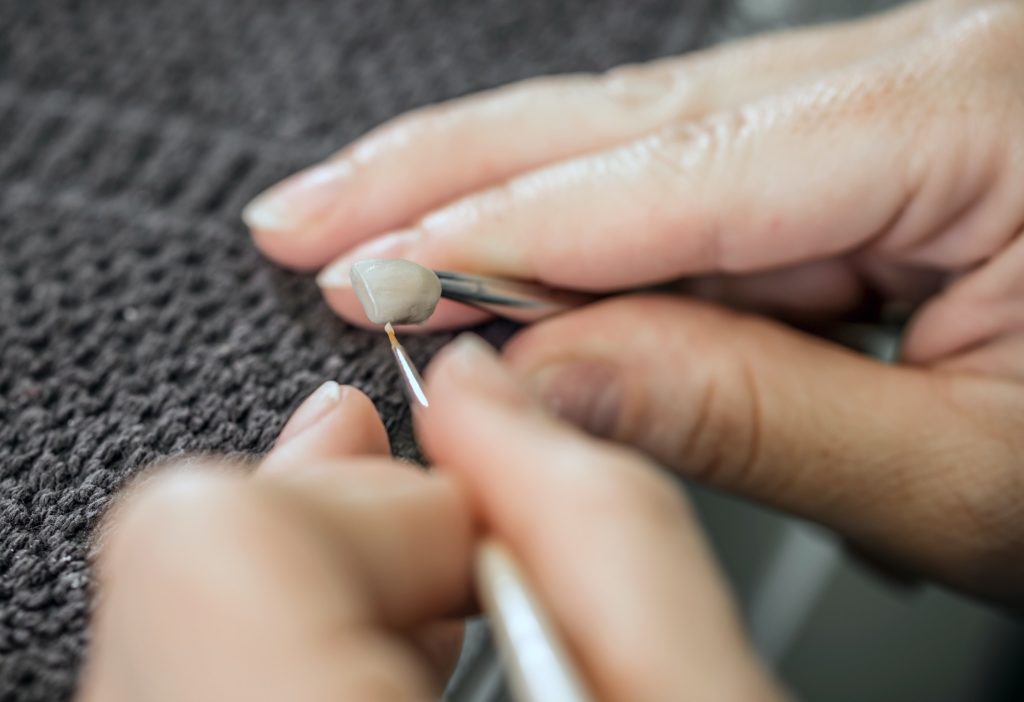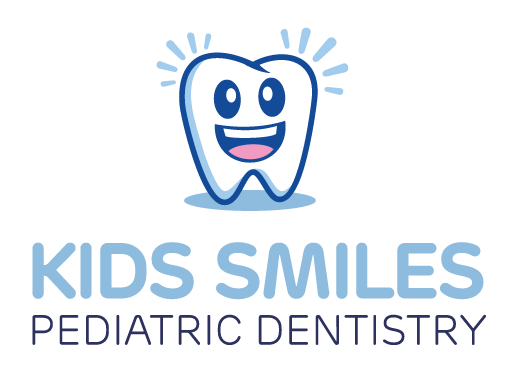Pediatric Crowns
Dr. Kelly Jobe | Pediatric Dentist | St. Louis, MO
What are pediatric crowns?
Pediatric crowns are tooth-shaped “caps” that restore a decayed tooth to its original shape, function, strength, and appearance. Crowns not only save decayed teeth, they also prevent decay from spreading (yes, it can spread!). Crowns are cemented to the tooth, making it a great long-term solution to restore discolored, misshapen, broken, or decayed teeth.

Does my child need a crown? Are crowns on baby teeth necessary?
Baby teeth are just as important as adult teeth. They allow kids to eat, speak, have proper orofacial development and guide adult teeth into the correct position. Enamel is actually thinner on baby teeth when compared to adult teeth, so decay can spread quickly. In addition, baby teeth are more narrow and can very quickly lose the structure needed to support function.
These factors combined are why a pediatric dentist may suggest a crown for your child. It’s a quick, easy procedure that restores function and allows the tooth to remain in use until its natural age of exfoliation.
Tooth decay is the leading cause of premature tooth loss in children. About 80% of decay starts in between the teeth where it can’t be easily detected just by looking. When a child has severe tooth decay (like a severe cavity, or multiple cavities), there is a threat of pain, swelling and losing those teeth before their time.
Children do begin to lose a few baby teeth by about six, but they won’t lose their baby molars until around age 13. These baby teeth need to stay put until the adult teeth come in, or there can be severe dental issues down the road.
Baby teeth are like placeholders for permanent, adult teeth. When baby teeth aren’t there to guide adult teeth, the adult teeth may not form correctly in the mouth (especially as the jawbone grows) or find their proper place to erupt.
All of this haphazard movement can cause overcrowding and misaligned teeth, and will likely create the need for orthodontic treatments in the future (like braces). Crowns on baby and adult teeth prevent all of this from happening.
Here are some specific examples of when a crown might be necessary for your child:
- If a baby tooth has severe decay
- If they have received treatment to the nerve of a tooth (pulp treatments)
- If they have severe wear from grinding, erosion or both
- If their teeth have not formed properly
- As a temporary fix because they are too young to have a permanent adult crown
Decay and pulp treatments are the most common reason that crowns are needed in children.
Why not just use a filling instead?
You might wonder at this point why we wouldn’t just use a filling instead of a crown. Well, since baby teeth are so small, drilling and filling a cavity could cause the tooth to break. Also, severely decayed teeth are often beyond the scope of repair because they are more likely to fall out, wear out, or break.
In all of these cases, crowns are an excellent solution for removing any cavities and tooth decay, while keeping the existing tooth structure intact. Crowns usually stay in place until the baby tooth falls out on its own.
What is the pediatric crown procedure like?
In most dental crown procedures for children, there are just a few steps. The dentist will:
- Put the tooth and tissue to be treated to ‘sleep’ with topical and local anesthetic, if needed
- Put a dental dam or isolating device in place
- Remove decay
- Prepare tooth structure for crown placement
- Cementation of final crown
Crown procedures for adults usually require multiple visits to the dentist, but most crowns for kids are finished in a single appointment.
With adults, dentists usually need to make an impression of your tooth, and take other steps as well. But crowns for kids are usually pre-made and ready to go. This is great news because kids don’t usually have the longest attention spans, and definitely don’t like being at the dentist for longer than absolutely necessary!
Most dental crowns for children are stainless steel. They come pre-made in different sizes, so the dentist will measure your child’s tooth so that we can find the perfect fit. Crowns have an excellent history and provide a safe, proven outcome.
Tooth-colored, zirconia crowns are an option in certain cases. These require a high level of cooperation from the child and a stronger commitment from parents. All options will be discussed and any questions answered prior to beginning any treatment.
If the decay involves the nerve of your child’s tooth, the dentist might need to complete pulp therapy before placing the crown. It is a very common procedure for both baby and permanent teeth. It allows the tooth to remain alive and function, while removing any compromised tissue. Pulp therapy is well tolerated with a proven rate of success.
Which crown is best for kids?
Stainless steel is by far the most popular material for child crowns, which is also the material recommended by the American Academy of Pediatric Dentistry (AAPD).
Stainless steel crowns:
- Are extremely durable
- The least expensive
- Have full-coverage protection for the tooth
- Cause very little sensitivity
- Are less likely to need retreatment
- Are a good choice for children who need general anesthesia
- Are often used as an attachment for a space maintainer
- Have been used in dentistry for over 50 years
As mentioned, all options will be discussed prior to any treatment decisions.
Questions for Dr. Jobe or the Kids Smiles Pediatric Dentistry team?
Dr. Kelly Jobe and the team at Kids Smiles Pediatric Dentistry are committed to providing the best pediatric dental care in the greater St. Louis, MO area! Please contact us with any questions regarding your kid’s dental health, we are here to help!
What Our Patients Say
Dr. Kelly Jobe & her staff are passionate about providing the best pediatric dental care in St. Louis, MO!
Stay connected with Kids Smiles
Stay connected with Kids Smiles
Quick Links
Contact Info
-
Kids Smiles Pediatric Dentistry
9735 Landmark Parkway Dr.
Suite #16 St. Louis, MO 63127 - (314) 270-5817
- info@kidssmilesdentist.com
© Copyright Kids Smiles Pediatric Dentistry. All rights reserved. Privacy Policy.

